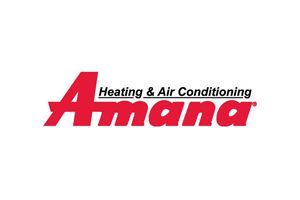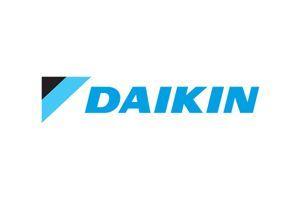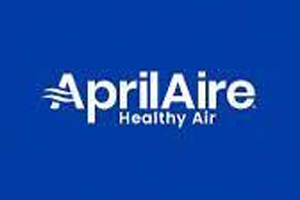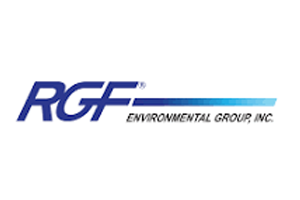FAQs
R.J. Staso Heating & Air Conditioning
Have an HVAC-related question? R.J. Staso Heating & Air Conditioning has the answer. Check out these FAQs and give us a call today for more information!
-
Do air conditioners dehumidify?
Yes, all air conditioners will remove some moisture from the air inside your home. Certain models can improve this effect by adjusting the fan speeds and controlling the compressor or air conditioner stages. Dehumidification is an integral aspect of air conditioning.
-
What causes an air conditioner to freeze up?
Ice formation or freezing in an air conditioning unit can result from various issues such as a blocked drain, a dirty filter, a dirty or obstructed coil, low refrigerant levels, blocked vents, or a malfunctioning indoor fan motor.
-
Why is my air conditioner leaking water?
A common cause of a leaking air conditioner is a clogged or partially blocked water drain from the indoor coil. Since air conditioners primarily remove moisture from the air, a dirty drain can lead to leaks.
Additionally, water leaks can occur due to ice buildup, which may be caused by a dirty filter, a dirty indoor coil, blocked vents, low refrigerant levels, or a faulty indoor fan motor. This ice can accumulate on the indoor coil and eventually melt, causing water to drip onto the floor inside the furnace or heat pump fan coil unit. Professionals from HVAC companies can inspect your unit and find the source of the leak. If you have a leaking air conditioner, call R.J. Staso Heating & Air Conditioning today.
-
How many BTUs do I need for an air conditioner to cool my home?
Air conditioning systems are typically designed to handle cooling on a 95-degree day, determining the BTUs needed to cool your home at that outdoor temperature. Older air conditioner models run at full capacity all the time, using 100% of their electrical power whenever they are on, regardless of the actual outdoor temperature. This means that when it's only 70 to 90 degrees outside, much of that capacity is wasted. In contrast, newer models can adjust their output to provide only the necessary cooling, which helps reduce electricity consumption and lowers your utility bills.
-
What is a ton of cooling?
One ton of cooling capacity is equal to 12,000 BTUs per hour. A BTU, or British Thermal Unit, measures heat energy. It represents the amount of heat needed to raise the temperature of one pound of water by one degree Fahrenheit. The 12,000 BTUs per hour signify the heat transfer rate required to melt one ton of ice at 32 degrees Fahrenheit over a day. Thus, a three-ton air conditioning system would provide 36,000 BTUs per hour. Air conditioning works by moving heat from inside your home to the outside using refrigerant.
-
Should I cover my outdoor air conditioning unit during the winter?
It's not always necessary to cover your outdoor air conditioning unit, as they are designed to endure various weather conditions. However, if your unit is situated near or under a tree, it's advisable to cover it to prevent debris accumulation during the off-season. Be sure not to cover the unit completely. Allow some airflow at the bottom to avoid trapping moisture inside. Some people place a piece of plywood on top of the unit to protect it from falling ice and prevent rodents from entering. Always remove any cover before using the unit again in the spring.
-
What is the difference between SEER and SEER2?
SEER, or Seasonal Energy Efficiency Ratio, measures the cooling efficiency of an air conditioner or heat pump over a typical cooling season, calculated by dividing the cooling output by the energy consumed in Watt-Hours. SEER2 is a revised version of this measurement, incorporating the new M1 blower testing procedure. A higher SEER or SEER2 rating indicates a more energy-efficient system, resulting in lower operating costs.
According to the United States Energy Information Administration, 88% of homes have air conditioning. If your home is one of the few that doesn't have it, call today to find the best unit for your home.
-
On my thermostat, what setting should my fan be on?
The "automatic" setting on your thermostat means the fan will turn on and off based on the room temperature. If your home has an air cleaner or if you prefer continuous airflow, you should switch the fan setting to "on." Central air cleaning systems only function when the furnace is circulating air, so to maximize your air cleaner's efficiency, keep the fan set to "on." This setting also helps maintain a more consistent temperature throughout your home. Call today if you have more questions about air conditioning.
-
What is an AFUE rating?
Furnaces are evaluated using the Annual Fuel Utilization Efficiency (AFUE) ratio, which indicates the percentage of heat generated for each dollar spent on fuel. Similar to the miles-per-gallon rating for cars, a higher AFUE rating means greater efficiency and lower fuel costs. As one of the HVAC companies you can depend on, you can count on us when you have questions about your furnace.
-
How often should I have my furnace cleaned and serviced?
In our professional experience, your furnace and air conditioning unit should be cleaned and serviced annually. Regular cleaning ensures that your furnace operates more efficiently and cost-effectively. This maintenance also includes a comprehensive safety check of the entire unit for any cracked, defective, or damaged parts. Damaged parts could lead to carbon monoxide leaks in your home, which can be hazardous without you realizing it.
-
What types of heating and cooling systems does RJ Staso service?
RJ Staso services a variety of systems, including furnaces, boilers, air conditioners, heat pumps, and ductless mini-split systems.
-
Does RJ Staso offer emergency repair services?
Yes, RJ Staso offers emergency repair services for heating and cooling systems. Contact the company for immediate assistance.
-
How often should I have my heating and cooling system serviced?
It is recommended to have your heating and cooling system serviced annually for optimal performance and energy efficiency.
-
What brands of heating and cooling equipment does RJ Staso work with?
RJ Staso works with a variety of reputable brands in the heating and cooling industry. Contact the company for specific brand information.
-
Does RJ Staso offer any maintenance plans?
Yes, RJ Staso offers maintenance plans for regular servicing of your heating and cooling systems. This can help extend the lifespan of your equipment and improve efficiency.
-
How can I improve the energy efficiency of my HVAC system?
You can improve energy efficiency by scheduling regular maintenance, changing filters regularly, and using programmable thermostats.
-
What should I do if my HVAC system is not working properly?
If your HVAC system is not working properly, contact RJ Staso Heating and Air Conditioning for a diagnostic service and repairs.
-
How can I get a quote for a new installation or repair?
You can request a quote for a new installation or repair by contacting RJ Staso Heating and Air Conditioning through the contact page on the website.









Share On: